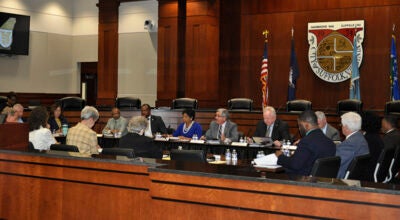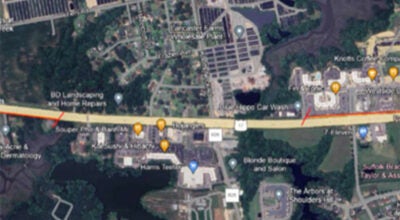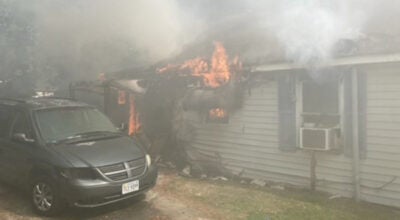Cameras watch intersection action
Published 9:59 pm Saturday, November 16, 2013

Brian DeFreeuw, acting traffic signal systems superintendent, monitors the intersection of North Main Street and Constance Road from a control room on Carolina Road. Cameras throughout the city keep a watchful eye on traffic and help it flow smoothly.
Suffolk motorists who know the city doesn’t yet have permission to catch red-light runners with cameras might wonder about the camera-like objects attached to most of the city’s traffic signals.
The fact is, they are cameras, and they’re watching you. But read further before you exclaim, “I knew it.”
Their purpose isn’t to catch those flouting traffic laws but rather to ensure traffic can run efficiently through the signals, city traffic engineer Robert Lewis said.
The cameras are hooked up to software that detects when a vehicle is sitting in or passing through a particular lane. That way nobody has to wait endlessly for a green light, and green lights don’t stay that way long if there isn’t any traffic coming and others are waiting.
“We do not have any intersections in the city where we have a fixed cycle,” Lewis said. “If nobody’s coming, we want that signal to be able to change to the side street.”
Like in all other areas of society, technology in traffic detection has evolved rapidly in recent years.
The old system — a loop detector embedded in the pavement — detected a car in the lane because the mass of metal disturbed its magnetic force. It was reliable technology, Lewis said — that is, until the asphalt shifted or the gas company cut the line.
New technology came about around the end of the Cold War, when military technology contractors suddenly found themselves without much to do.
“They figured if they could find a submarine in the middle of the ocean, they could find a car on the road,” Lewis said.
First came microphones that listened for traffic, then radar and microwaves that detected traffic.
“None of them had the reliability of the old loop detector,” Lewis said.
But then the cameras came along and have been getting steadily more reliable. At this point, about 70 of the city’s 100 or so signalized intersections operate based on what the cameras tell them.
Some intersections have a camera facing each direction. Others, such as the intersection of Bridge Road and Harbour View Blvd., have only one with a fisheye-shaped lens, which can see all directions of the intersection.
“Reliability has been outstanding,” Lewis said.
The cameras also help improve safety, Lewis said. For example, a camera on the off-ramp from Route 58 west to Godwin Boulevard watches for the traffic and gives the exiting cars a green light when the line backs up too far. That way, nobody gets stuck sitting in the through lanes of the bypass.
“This is a temporary rabbit we could pull out of the hat,” Lewis said of that ramp, noting the city is getting ready to upgrade it.
Other city departments, particularly Emergency Management, also use the cameras. The one at Main Street and Constance Road gets a workout during heavy rain because it can see the flood-prone Kimberly Bridge, Lewis said.
For those concerned about privacy, Lewis assures folks they don’t have to worry. Unless the sun falls exactly right, the people on the other end of the camera can’t even read license plates or see faces. The system does not record video, which Lewis considers a blessing.
“If we recorded, I wouldn’t do anything all day but respond to FOIA requests” from people who had been in accidents, he said, referring to the state’s open-records law.
About six people work monitoring, maintaining and upgrading the system, Lewis said. A human does not monitor it at all times, but the system notifies an on-call person if it detects something wrong.
“Our goal is to get to where we self-detect problems before a citizen or a police officer can see it,” Lewis said.






